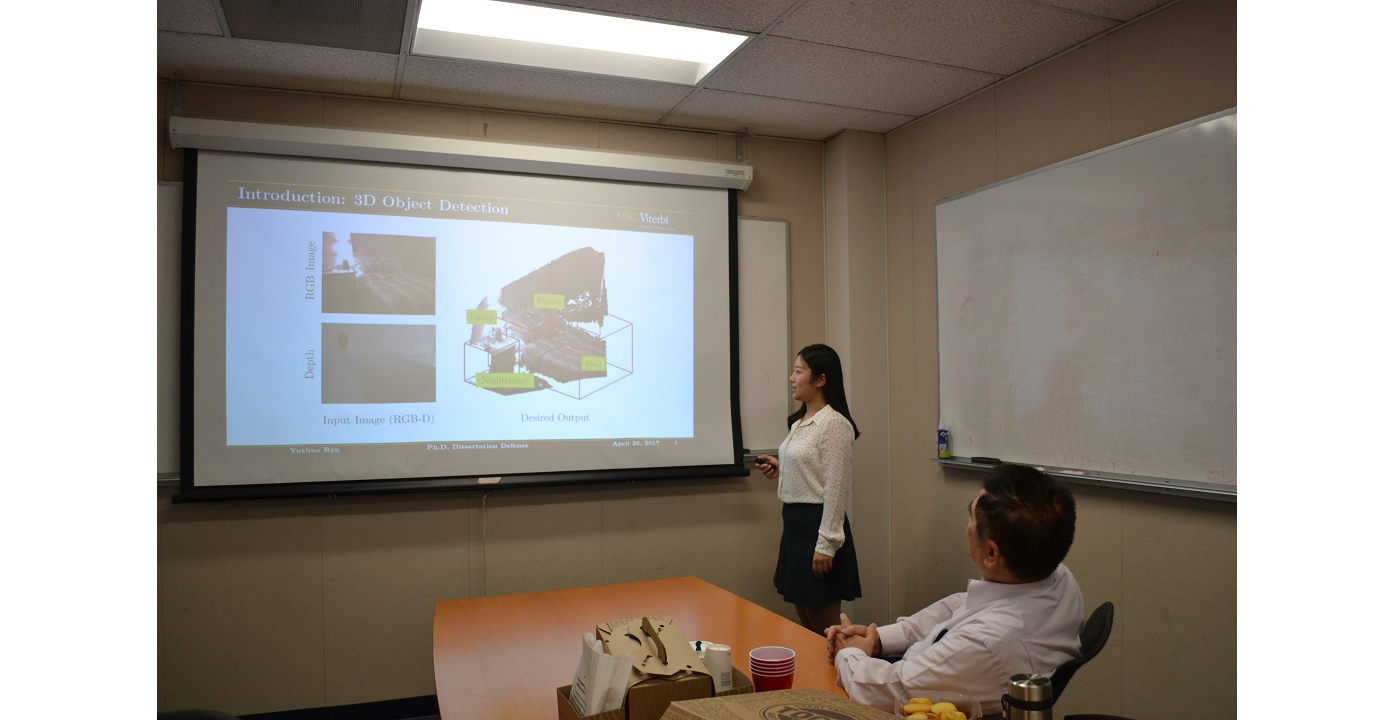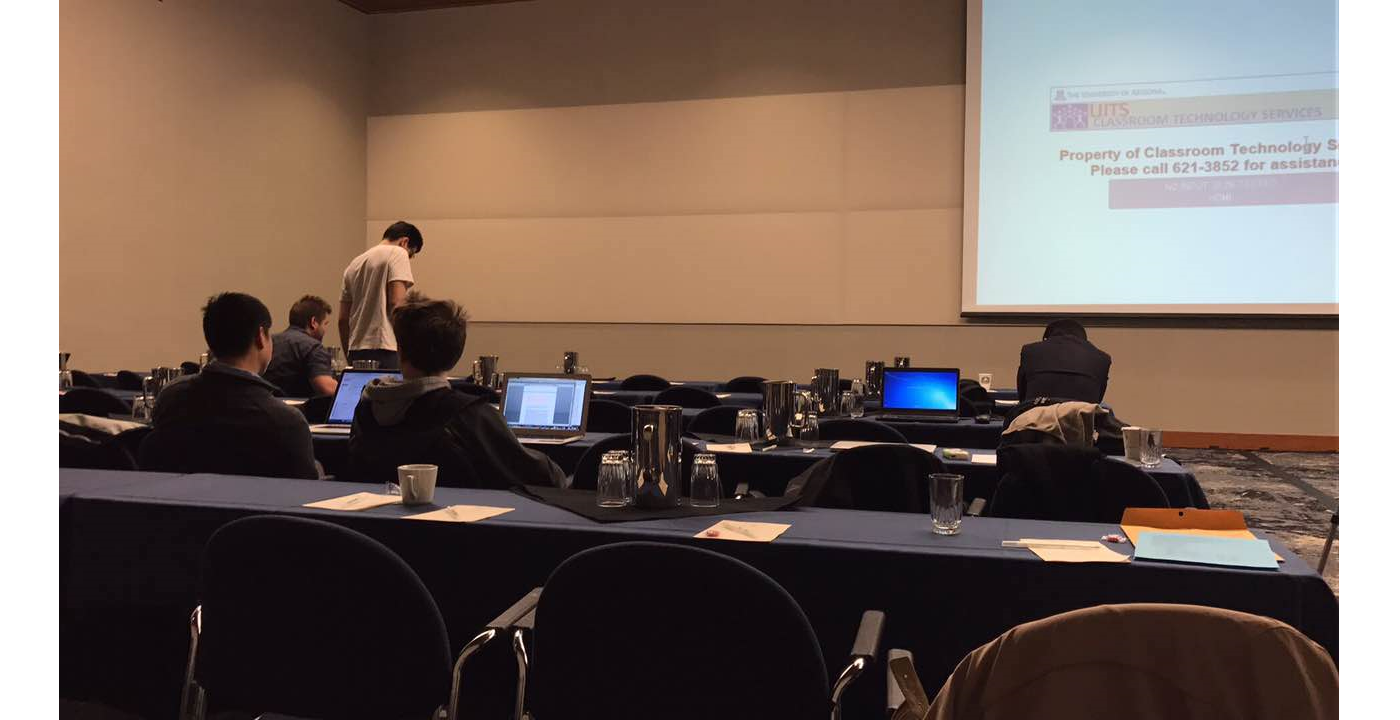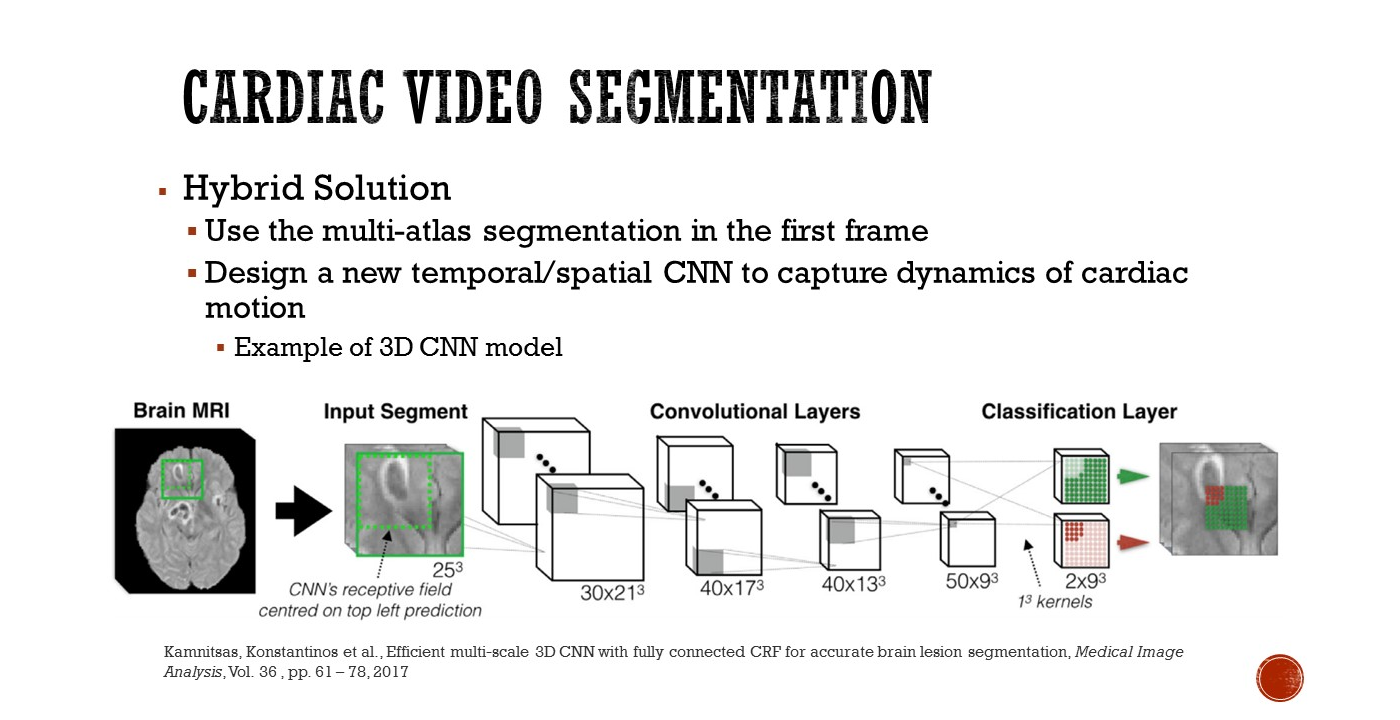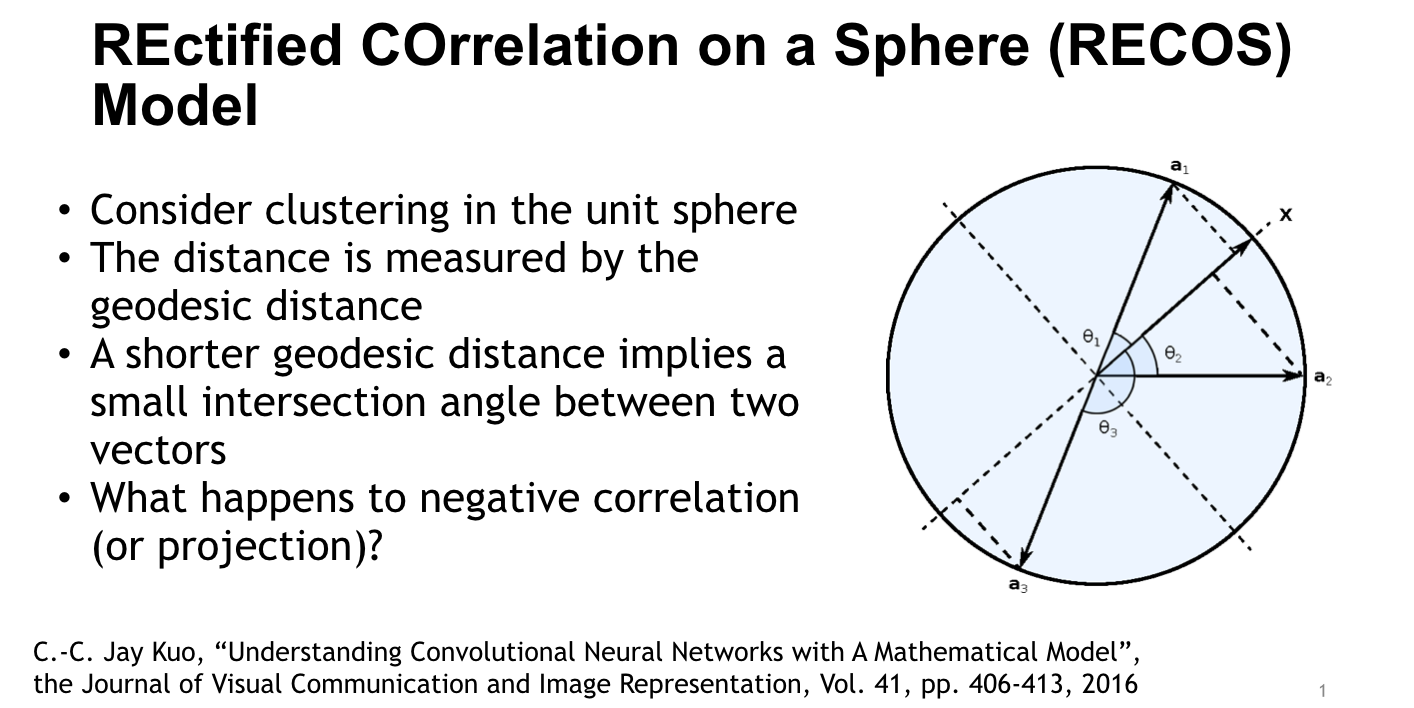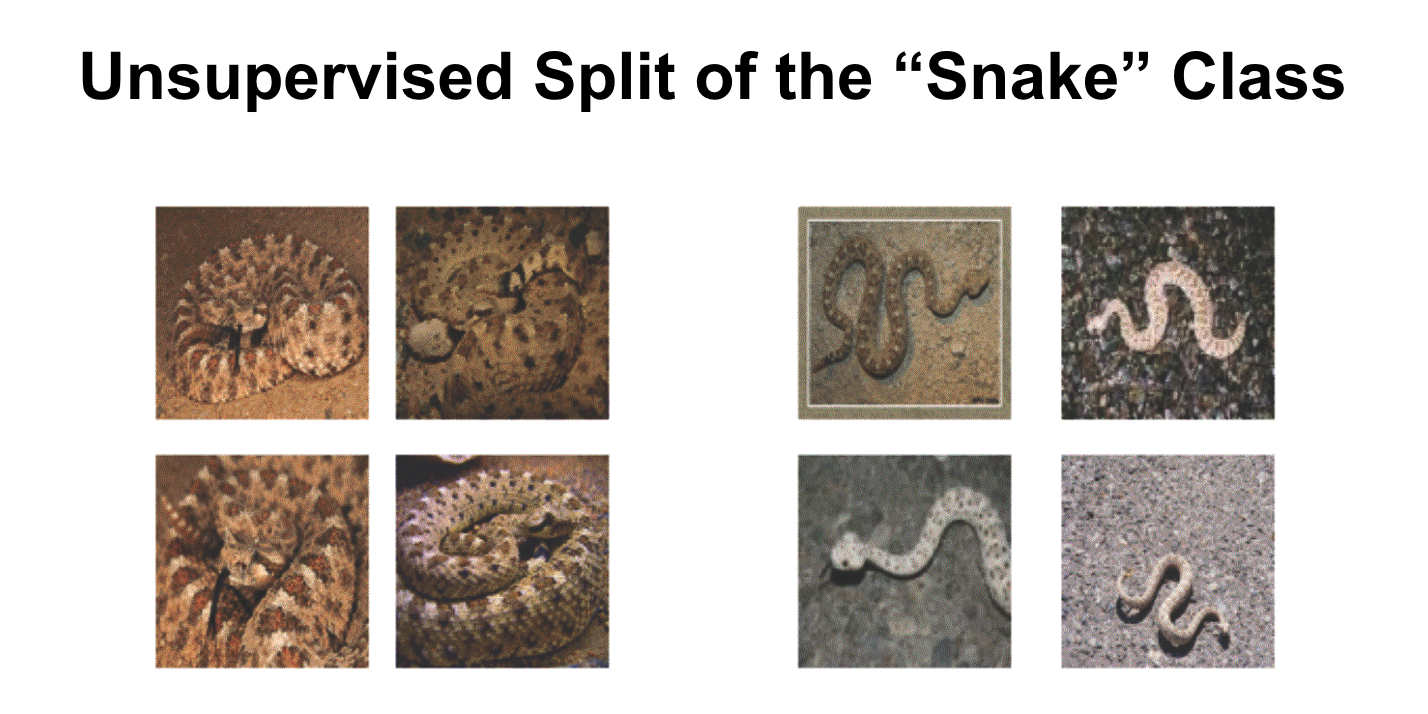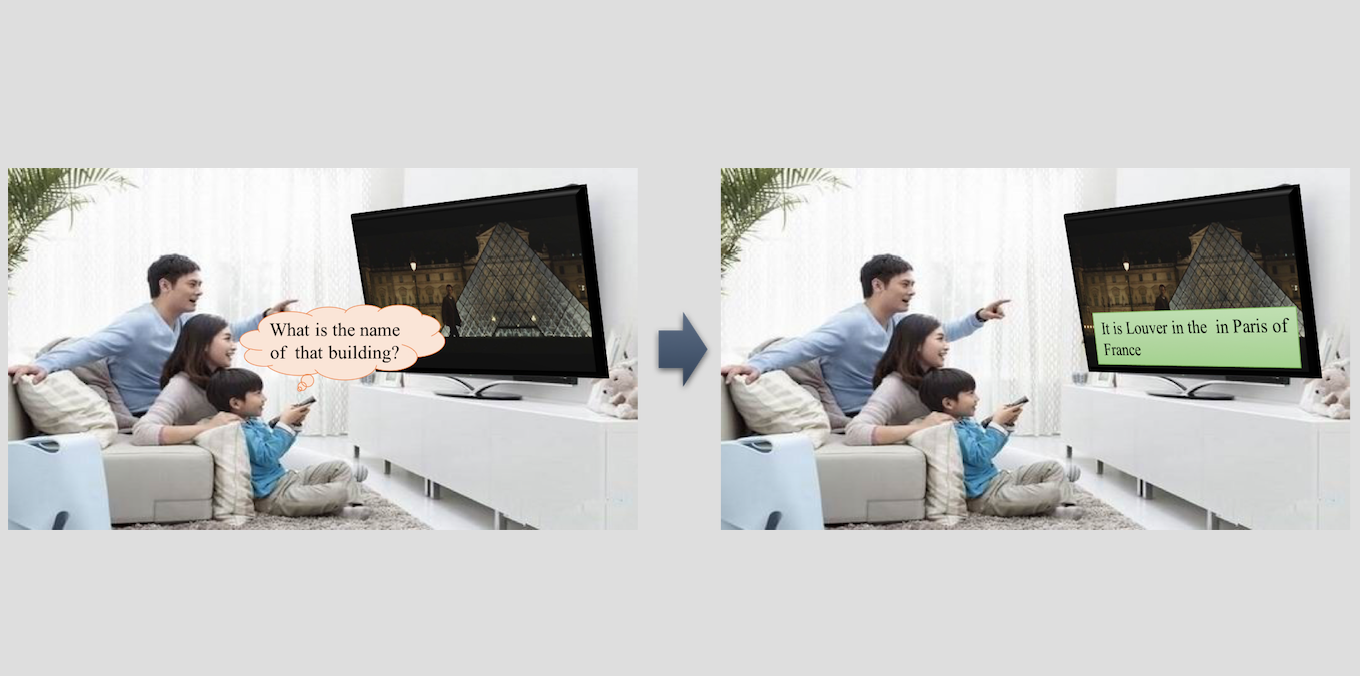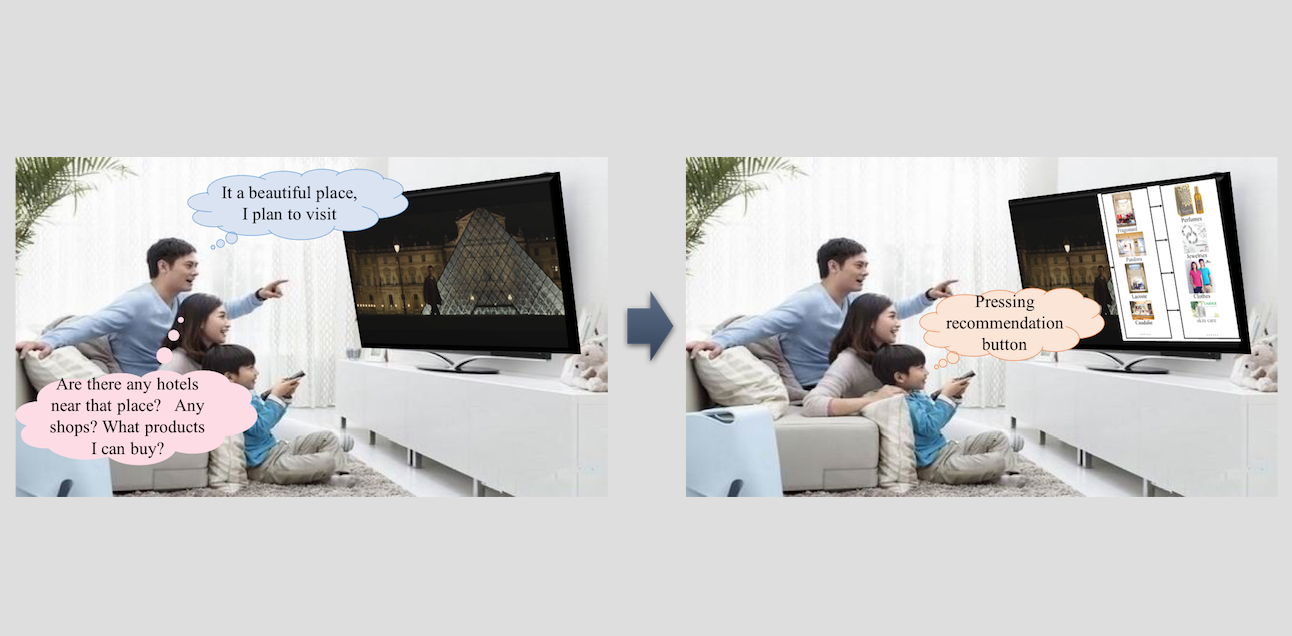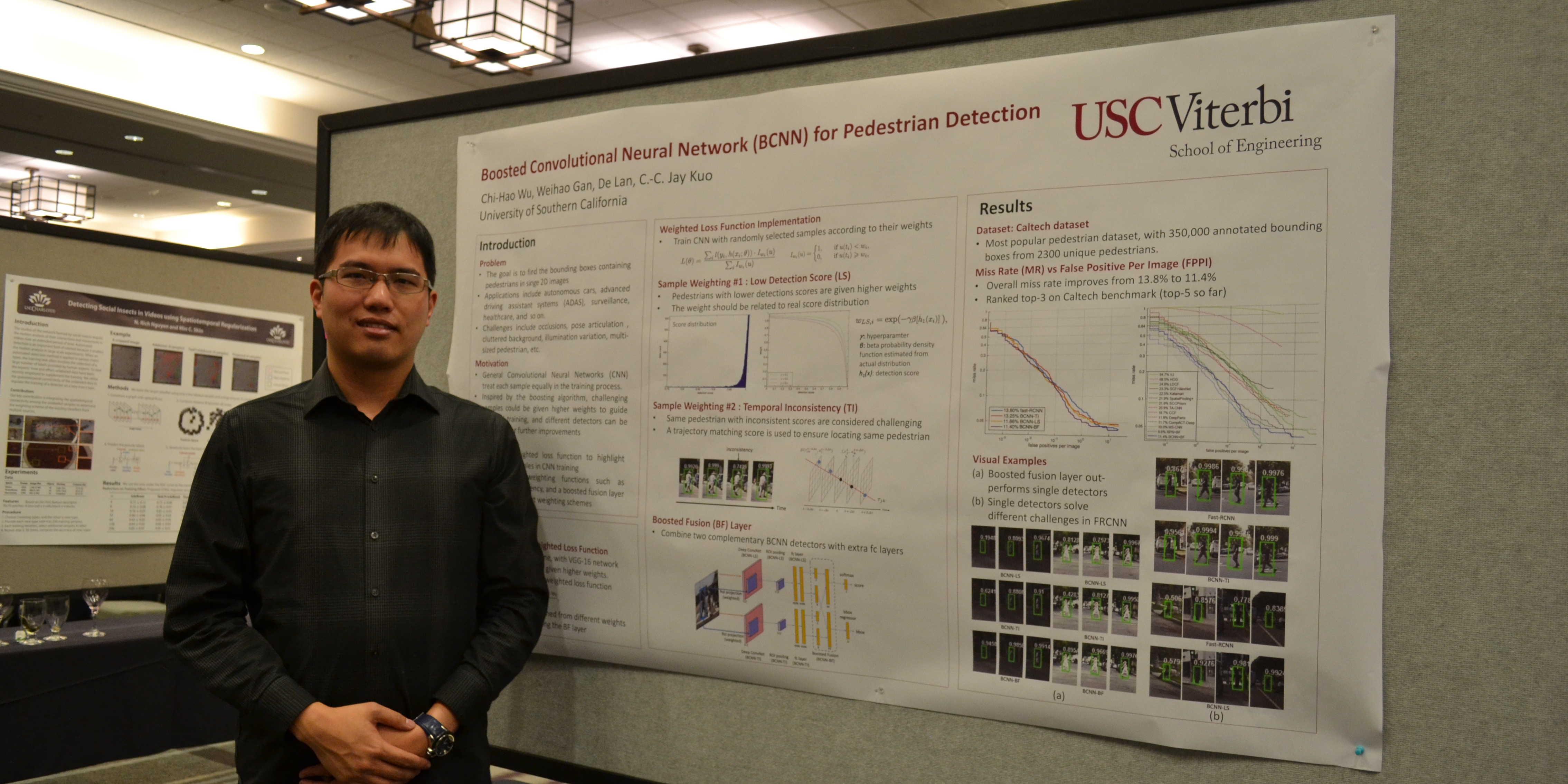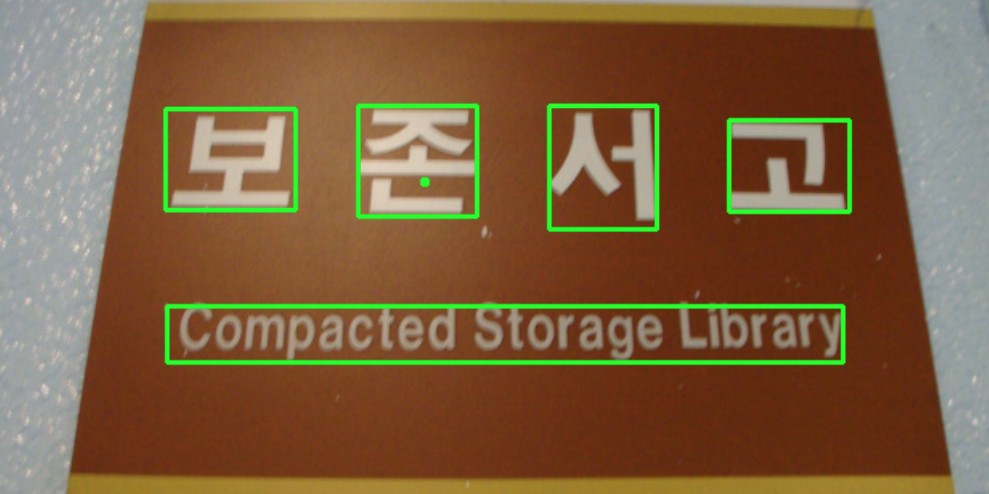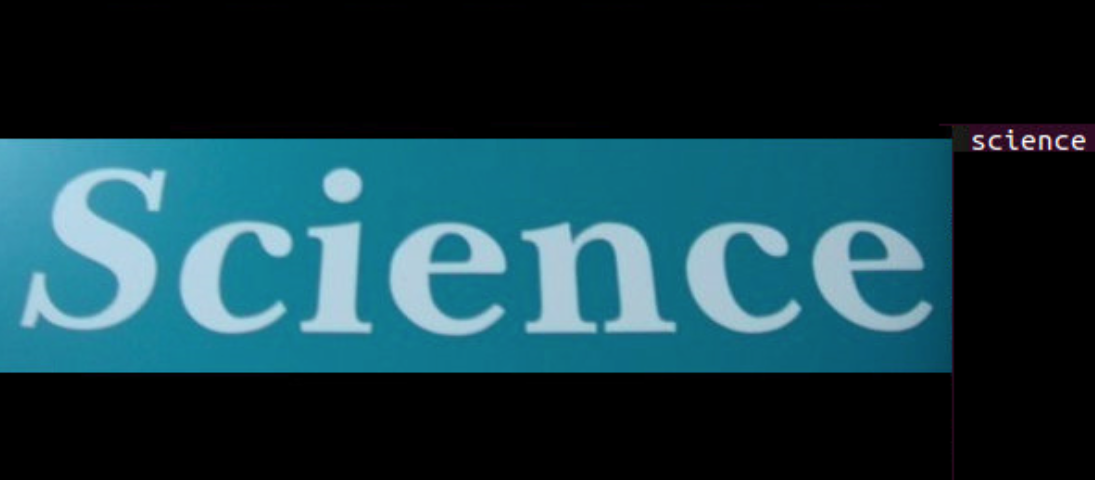Congratulations to Yuzhuo Ren for Passing Her Defense
Congratulations to Yuzhuo Ren for passing her defense on April 26, 2017. Her Ph.D. thesis is entitled “Machine Learning Techniques for Outdoor and Indoor Layout Estimation”.
Abstract of thesis:
In my dissertation, I study three research problems: 1) Outdoor geometric labeling, and 2) Indoor layout estimation and 3) 3D object detection.
A novel method that extracts global attributes from outdoor images to facilitate geometric layout labeling is proposed. The proposed Global-attributes Assisted Labeling (GAL) system exploits both local features and global attributes. The performance of the proposed GAL system is demonstrated and benchmarked with several state-of-the-art algorithms against a popular outdoor scene layout dataset.
Existing solutions to indoor layout estimation largely rely on hand-craft features and vanishing lines. They often fail in highly cluttered indoor scenes. The proposed coarse-to-fine indoor layout estimation (CFILE) method consists of two stages: 1) coarse layout estimation; and 2) fine layout localization. In the first stage, we adopt a fully convolutional neural network (FCN) to obtain a coarse-scale room layout estimate that is close to the ground truth globally. In the second stage, we formulate an optimization framework that enforces several constraints such as layout contour straightness, surface smoothness and geometric constraints for layout detail refinement. The proposed CFILE system offers the state-of-the-art performance on two common benchmark datasets.
Given a RGB-D image, we examine the 3D object detection problem with an objective to produce a bounding box around the object and classify its category. This is a challenging problem due to high intra-class variance, illumination change, background clutter and occlusion. Here, we propose a novel solution that integrates the context information together to provide a robust 3D object detection solution. Extensive experiments are conducted to demonstrate that the proposed Context-3D method achieves the [...]


